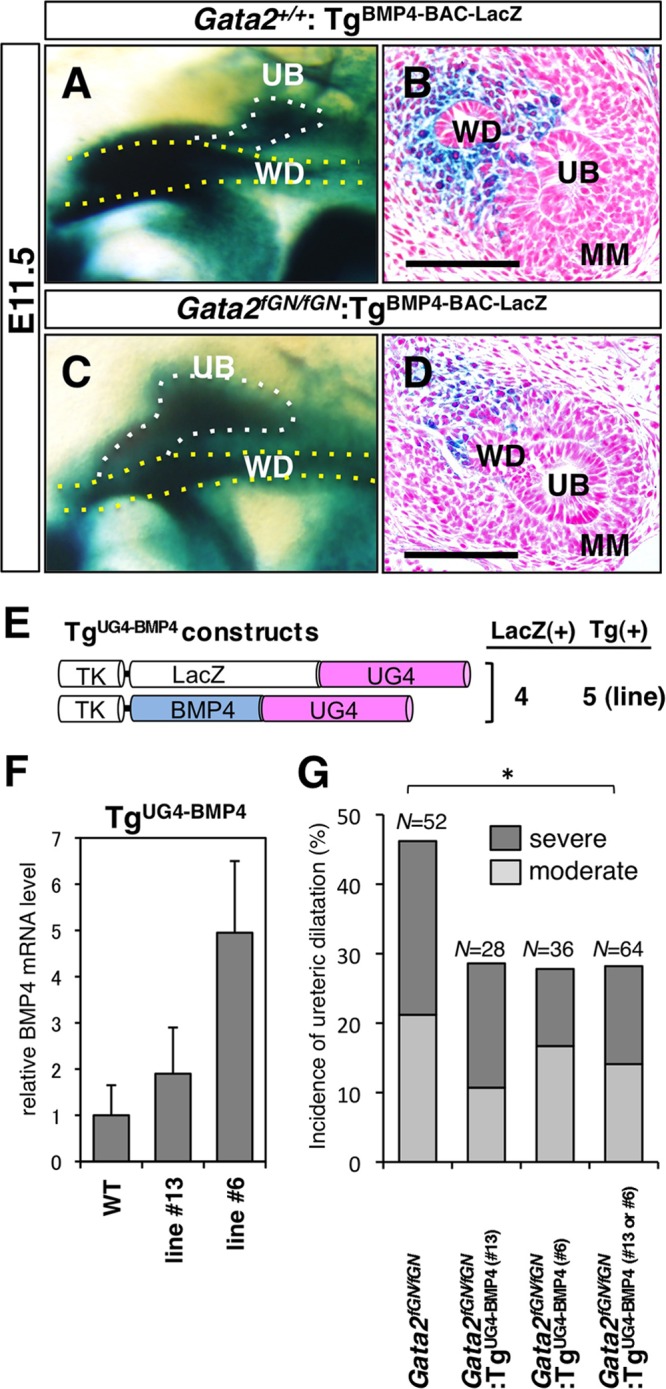Fig 4.

BMP4 is a downstream effector of GATA-2 in the urogenital mesenchyme. (A and B) LacZ reporter expression was abundant in the mesenchymal cells around the Wolffian duct (WD) and the ureteric bud (UB) of E11.5 Gata2+/+:TgBMP4-BAC-LacZ embryos. Bar, 50 μm. (C and D) In E11.5 Gata2fGN/fGN:TgBMP4-BAC-LacZ mutant embryos, LacZ reporter expression was reduced in the corresponding mesenchyme. Bars, 50 μm. (E) Schematic diagram of the TgUG4-LacZ and TgUG4-BMP4 constructs. The UG4 enhancer (2.8 kbp) was cloned 3′ of BMP4 or LacZ cDNA under the control of the herpes simplex virus thymidine kinase (TK) promoter. The number of transgenic lines that were positive for LacZ staining in the caudal domain of the urogenital mesenchyme [LacZ(+)] and the total number of established transgenic lines [Tg(+)] (where LacZ and BMP4 cDNA positivity is demonstrated by PCR genotyping) are shown to the right of the schematic diagram. (F) The BMP4 mRNA levels (normalized to GAPDH mRNA levels) in the ureter/bladder of postnatal day 3 to 5 pups (n = 3) with or without TgUG4-BMP4 are shown. The data are presented as means plus SDs (error bars). (G) The total incidence and severity of megaureters were evaluated in 3-week-old Gata2fGN/fGN mice with or without TgUG4-BMP4. The degree of severity of the megaureters (severe or moderate) is indicated. Both TgUG4-BMP4 transgenic lines (line 6 or 13) rescued the urinary tract abnormalities. The statistically significant difference (P < 0.05 by a Mann-Whitney U test) between the values for Gata2fGN/fGN and Gata2fGN/fGN:TgUG4-BMP4 (line 13 or 6) mice is indicated by the bar and asterisk (see Table 2).
